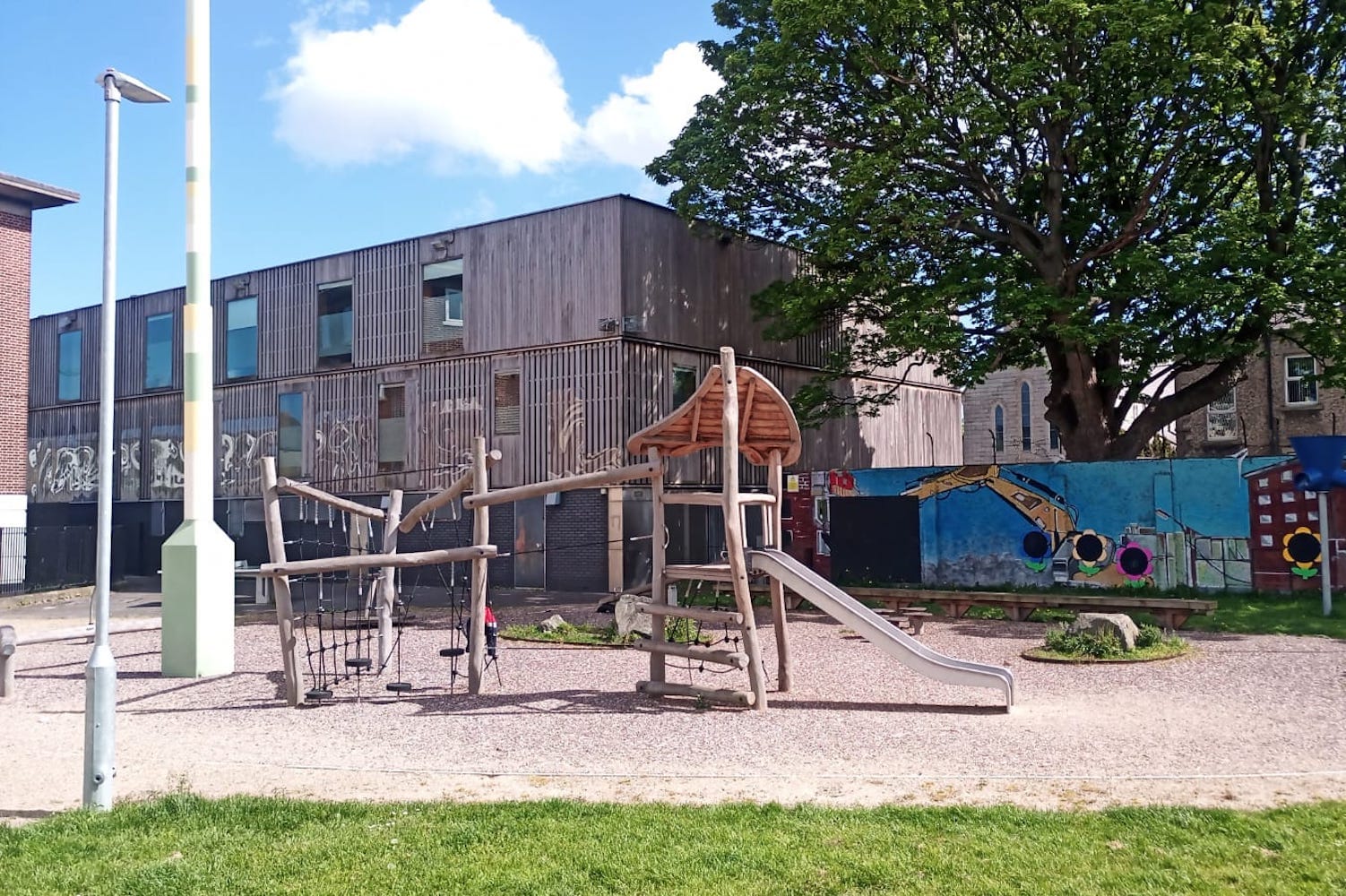What would become of the Civic Offices on Wood Quay if the council relocates?
After The Currency reported the idea of the council moving its HQ, councillors were talking about and thinking through the pros and cons and implications.
However, residents and local councillors believe this is temporary, and the trees and park will come to the area off Cork Street eventually.

Across the road from a council housing complex at Margaret Kennedy Road near the Coombe Hospital is a roughly seven-foot tall boundary, a white wall that looks like marble topped with a green metal fence.
The new residents of this housing complex came from the nearby flats at St Teresa’s Gardens, which is being demolished.
Behind the fence lies waste ground right now. But the current plan is for it to be redeveloped as a landscaped green area and playing pitch next year.
The council shouldn’t have built that wall, as it will block access to the park from the houses at Margaret Kennedy Road and neighbouring streets, says Kieran Rose, a former planner and local resident.
Sinn Féin Councillor Máire Devine says the plans for the redevelopment show a row of trees at Margaret Kennedy Road, but instead the council has built an “industrial, Soviet-style fence”.
It’s unclear at the moment whether the fence is temporary or permanent. Dublin City Council hasn’t responded to queries about that sent last Thursday.
Andrew O’Connell, a photographer who grew up in St Teresa’s Gardens, says council officials have assured him that the wall is temporary.
He wants the council to provide access immediately though because the children living there need somewhere to play now.
“Summer is here” and the council should bring over the old playground from St Teresa’s Gardens “urgently”, he says.
The redevelopment of the patch of empty land is part of a larger project that will take in a stretch to the south.
It is included in a masterplan, agreed by Dublin City Council and the developer Hines, which should see around 2,000 homes built on council land there, and the parcels known as the former Player Wills cigarette factory and the Bailey Gibson lands.
The new park should be open and accessible to all residents, says Rose. “In an area that lacks open space so much it is just crazy.”
The approach to the new park seems very different from the nearby Weaver Park, which is accessible from all sides and has low fences, says Rose. The fence here is not attractive, he says. “It certainly looks awfully bleak.”
The plans for the area, which were approved by councillors, show a line of trees there instead of the wall, he says.
Rose says the road is very wide so he can’t understand why the council isn’t planting trees. “The need for trees should be taken into account from the get-go.”
Dublin City Council officials told Devine, the councillor, that the fence is temporary and the area in front of it will be used as a compound for machinery during the redevelopment, she says. If that is true then it is acceptable, she says.
O’Connell, who says he runs the popular Facebook page St Teresa’s Gardens Folklore Archive, says the wall is made of separate blocks in sections, he says, so “access could still be given”.
There is a different type of fencing around the rest of the site: silver metal stuff often used temporarily for construction projects.
Devine says that the St Teresa’s Gardens Regeneration Board plans to turn the wasteland into a wildflower meadow until it is properly developed. “That is great news for biodiversity”.
The current timeline for completion of the pitch and landscaped green area is 2022, she says – although that deadline may not be met.
Rose says that according to the planning permission granted for the homes at Margaret Kennedy Road, the council should also include a green area and a playground.
The planning permission includes: “The provision of a new urban park providing passive and active recreational uses and children’s play facilities.”
“Dublin City Council is not complying with the planning permission by not delivering the green and playground,” says Rose.
O’Connell says the new park probably won’t be built for around three years. In the meantime, the kids are going back and forth to play in the existing playground by the old flats of St Teresa’s Gardens but that can’t continue when those are scheduled for demolition, he says.

The council needs to fence off and level off part of the waste ground, “as a matter of urgency”, he says, “to give the kids access to an area where it is safe to play”.
The council staff could unscrew the existing swings, slides and climbing frames and bring them over to create a new playground, he says.
They are in good condition and “should be recycled urgently”, says O’Connell.